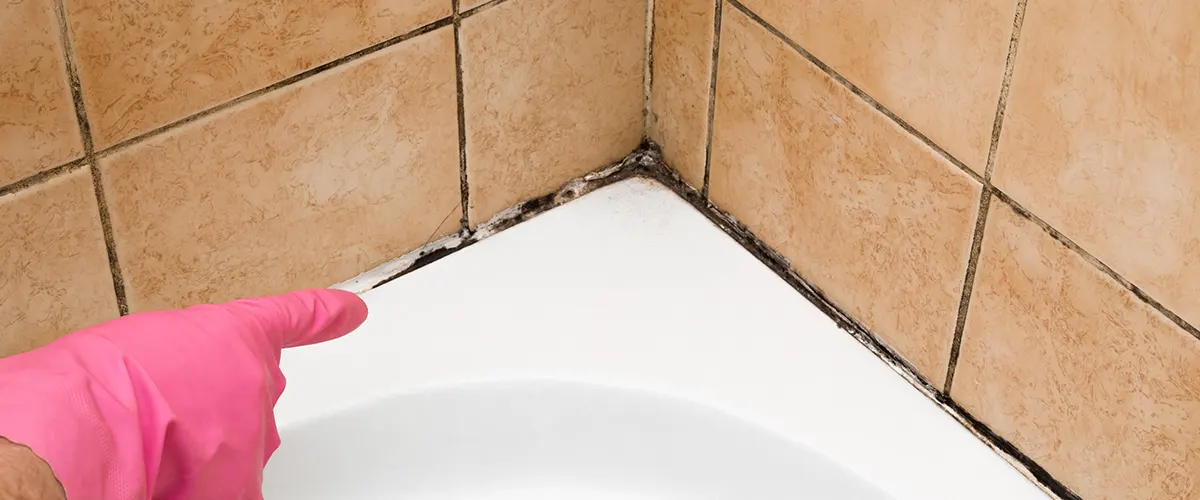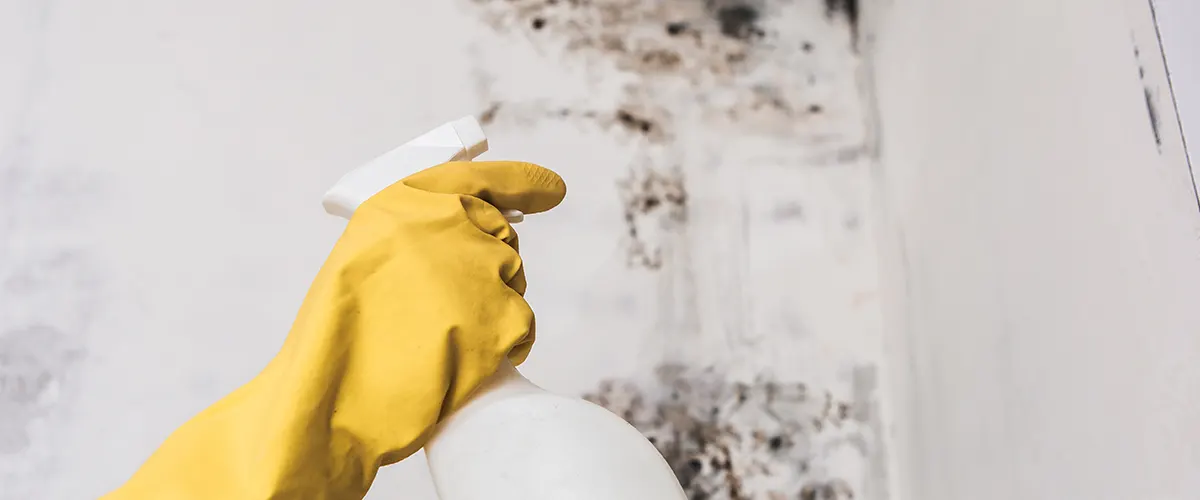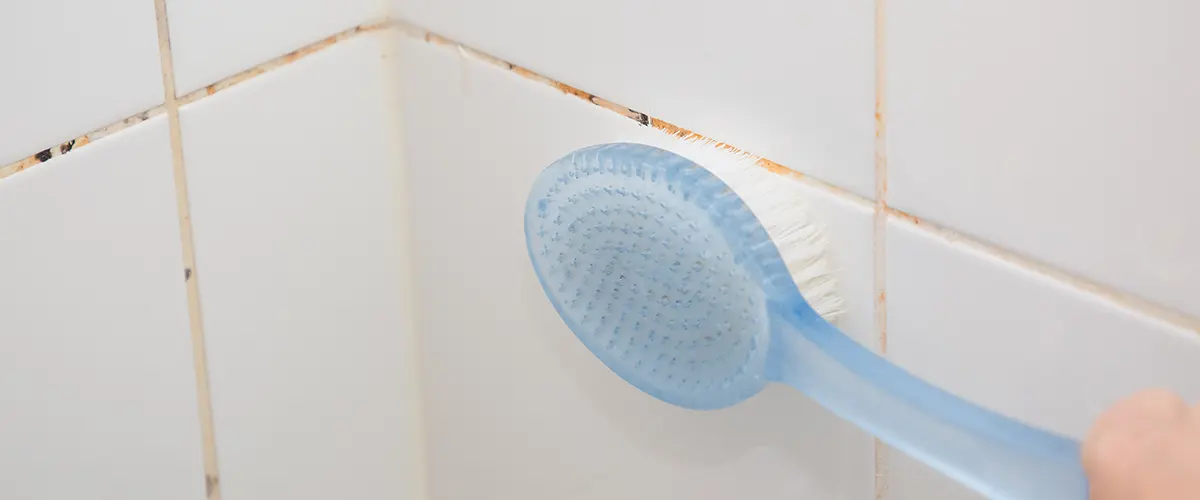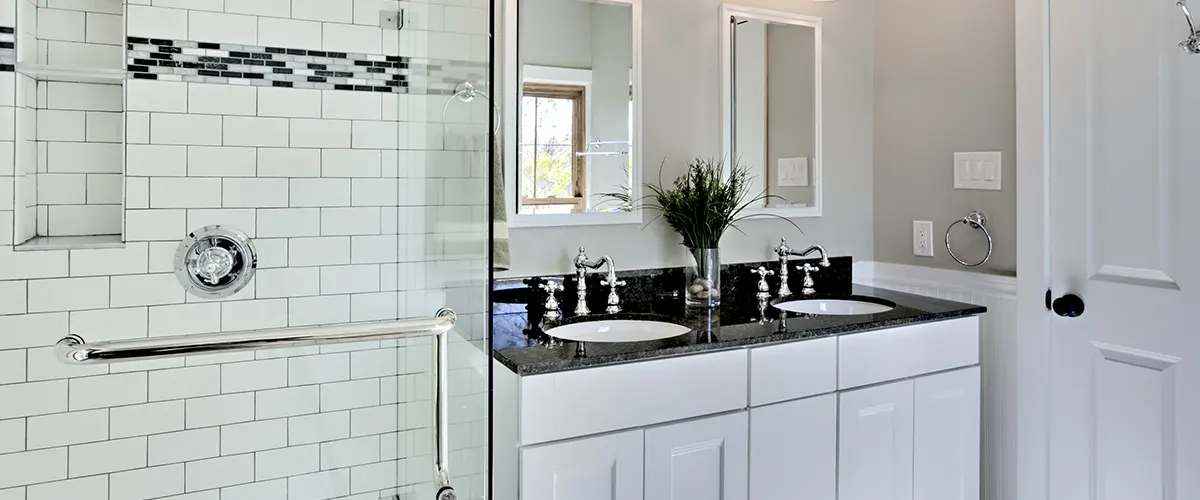Mold is a common problem in many homes, and the bathroom is a particularly popular spot for it to grow. This is because the entire bathroom remains damp due to the shower, bathtub, and toilet.
If you don’t take preventive measures, mold can quickly grow and become a big problem. This definitive guide will discuss how to prevent mold in shower and keep your bathroom clean and healthy!
1. What is mold, and why does it grow in the shower specifically?
Mold is a fungus that grows in areas with high humidity levels. This is why it often develops in the shower, as the area is constantly damp. Mold can cause various health problems, so it’s essential to take preventative measures to keep it from growing in your shower.
If you’re looking for a more in-depth explanation of mold, check out this National Institute of Health article.

2. Identify if you have a mold problem
If you’re not sure if you have a mold problem, there are a few ways to tell. One of the most obvious signs is if you see black, green, or white patches on your bathroom’s walls, ceiling, or floor. If you smell a musty odor in the bathroom, this could also be a sign of mold.
Some ways to identify bathroom mold are:
- Notice black mold spots on the walls, ceiling, or floor. If these spots appear in a bathroom, they might be due to water damage, and there's likely some sort of fungus growing inside too!
- White patches on walls or ceilings are also a sign of mold. This can be caused by humidity levels built up over time and condensation from showers, sinks, etc.
- The smell is stale - if there's an odor coming from your bathroom that smells like mildew, then this may indicate there's mold present.
- Allergy symptoms - if you are experiencing allergy symptoms, such as a runny nose, sneezing, and itchy eyes, then it's possible that mold is the cause.
3. The health risks associated with mold exposure
Mold can cause various health problems, including respiratory issues, skin irritation, and allergies. If you experience any of these symptoms, mold may be the cause.
In addition, mold can also cause more severe health problems such as:
- Respiratory problems: asthma, wheezing, and difficulty breathing
- Allergic reactions: rashes, hives, and sneezing
- Sinus infections
- Fever
- Fatigue
4. What can you do to prevent mold from growing in your shower?
- Poor ventilation
- Leaky pipes
- Clogged drains
- Humidity levels over 50%

1. Remove mold-prone materials from the bathroom
Bathroom mold occurs primarily in the shower. If you want to prevent bathroom mold, it’s essential to remove any materials prone to mold growth. This includes things like grout, caulk, and tiles. If these areas are damaged or cracked, water can seep in and create the perfect environment for mold to grow.
It’s also a good idea to remove any carpeting from the bathroom, as this can also harbor mold spores.
2. Install a ventilation fan
3. Keep the bathroom clean and dry
4. Clean the bathroom walls
5. Reduce humidity
One way to reduce humidity in your shower and keep bathroom mold at the lowest is to turn off the water while you’re soaping up or shampooing. This will help cut down on the amount of moisture in the air.
You can also open a window after showering to allow some of the moist air to escape. This will help reduce the humidity levels in the entire bathroom.
6. Reduce mold spores by using a dehumidifier
A dehumidifier can help to keep the humidity levels in the bathroom low, which will help to prevent mold from growing.
If these tips don’t seem like they’ll work for your situation, it may be time to call in a professional! They can help identify where the source of moisture is coming from and determine what kind of mold removal products will work best.
5. How to clean up the mold?

Wear gloves and a mask
Remove the moldy material
Dispose of the moldy material
Clean the bathroom mold
Treat the area for future mold growth
6. Tips to keep your shower mold-free in the future
- First, clean and dry the shower after each uses regularly. This will help prevent excess moisture from accumulating and create the ideal conditions for mold to grow.
- Secondly, be sure to install a vent in your shower to allow for proper ventilation. This will help circulate air and remove any excess moisture.
- Finally, consider using a sealant or sealant spray on all of the surfaces in your shower to help further protect them from moisture.
Conclusion
It is crucial to take the right measures on time to prevent mold in shower. There are many steps to take, from cleaning surfaces with bleach or anti-fungal sprays all the way to using a dehumidifier and sealant to prevent future mold growth.
In conclusion, if you are struggling with severe mold issues and need to remodel your bathroom quickly and affordably, Ace Bath can help. We have a wide range of services that will make your bathroom mold-free in no time. Contact us today for a consultation to see how we can help you reimagine your space!

